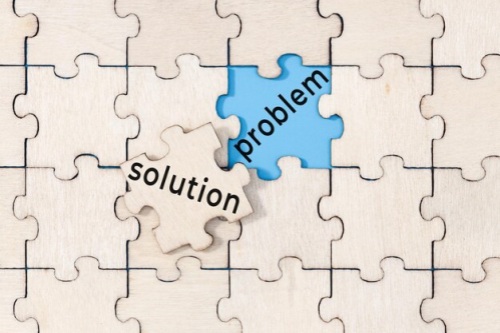Hello and welcome back to the Skills 360 podcast. I’m your host, Tim Simmons, and today we’re going to continue learning about cognitive bias. In this lesson, we’ll look at how to deal with the biases that impact our decision-making.
Trusting your gut and making quick decisions might work in some cases. But if you think your decision-making ability is based on perfect reasoning and complete information, well, you’re wrong. You’re only human after all. And your decision-making machinery is flawed. In our last lesson, we had a closer look at exactly the kinds of biases that lead to suboptimal decisions. So how can you overcome these biases?
It’s a question that every good manager should be asking themselves. And making better decisions while avoiding biases comes down to a few key things: awareness, curiosity, and evidence. Let’s start with awareness. Now, if you tuned in to our last lesson when we talked about different types of bias, then you’re already on the right track.
It’s pretty hard to counteract something that you don’t know exists. So merely by learning about the existence of bias, and the different types of bias, you’ll be able to improve your decisions. For example, last time, we talked about the halo effect, which happens when we have an overall positive impression of someone based on one positive trait. Or when our initial positive impression leads us to overlook subsequent negative information.
Next time you’re conducting an interview and you’re feeling really positive about a candidate, remember the halo effect. And you can ask yourself: is my opinion of this person being determined by one thing or my first impression? In this way, simply understanding that the halo effect exists is a first step in resisting it.
But don’t expect this to be easy. Resisting bias is hard. And it’s frequently uncomfortable. In fact, all learning involves stepping outside our comfort zone. So if you find learning about your biases unsettling, well, that’s a good thing. It’s safe and comfortable to think within our established frameworks. Getting stuck in a mental rut is easy. Getting out of one is not.
Of course, this requires us to be open to other ways of thinking. Curiosity is valued more than ever as a quality of good leaders. Curiosity involves acknowledging that we might not have all the answers. And good leaders actively seek out different opinions and perspectives.
There’s ample research to show how diversity of people, and diversity of thought, leads to better decisions. Who’s to say your experience is broad enough to know the answers to every question? You might think you’ve seen it all, but you haven’t. And good leaders seek out dissent and contradictory viewpoints. Even if you come to the same conclusion you started with, your ideas will be sharper.
Being curious requires us to slow down. If you’re used to kneejerk solutions to complex problems, then this is going to feel different. Seeking diverse perspectives takes a more intentional approach. There are many leaders who “consult” with different people but without the genuine openness to changing their own minds. So unless you are actually willing to revise your thought, then don’t even bother.
The third key to overcoming bias is focusing on evidence. Nothing beats good data when it comes to good decision-making. This might mean taking the time to collect more data than you currently have. Sure, your favorite marketing strategy might have worked ten years ago. But is that enough reason to assume it will work again? What does the research say?
Focusing on good information sometimes means removing things that we know might cause bias. Consider the idea of “blinding” in hiring processes. This means stripping away information that might lead to bias, including gender, name, and age. In this way, we evaluate candidates based more purely on their experience and suitability. Studies show that this leads to better hiring and greater diversity, both of which contribute to better decisions.
Can we completely eliminate bias through awareness, curiosity, and grounding ourselves in evidence? Well, completely bias-free decision-making is likely an unreachable ideal. But in an increasingly competitive world, with increasingly scarce resources, and with massive shifts in how people think, work, and relate, leaders who are actively trying to reduce bias are going to fare well.
Today, we’ve looked at some of the fundamental ways we can counteract the biases that harm our decision-making. We’ve focused on awareness, curiosity, and evidence. And if you’re open to the fact that biases exist, and that they are limiting, then you’ve taken the critical first step.
That’s all for today. So long. And see you again soon!















